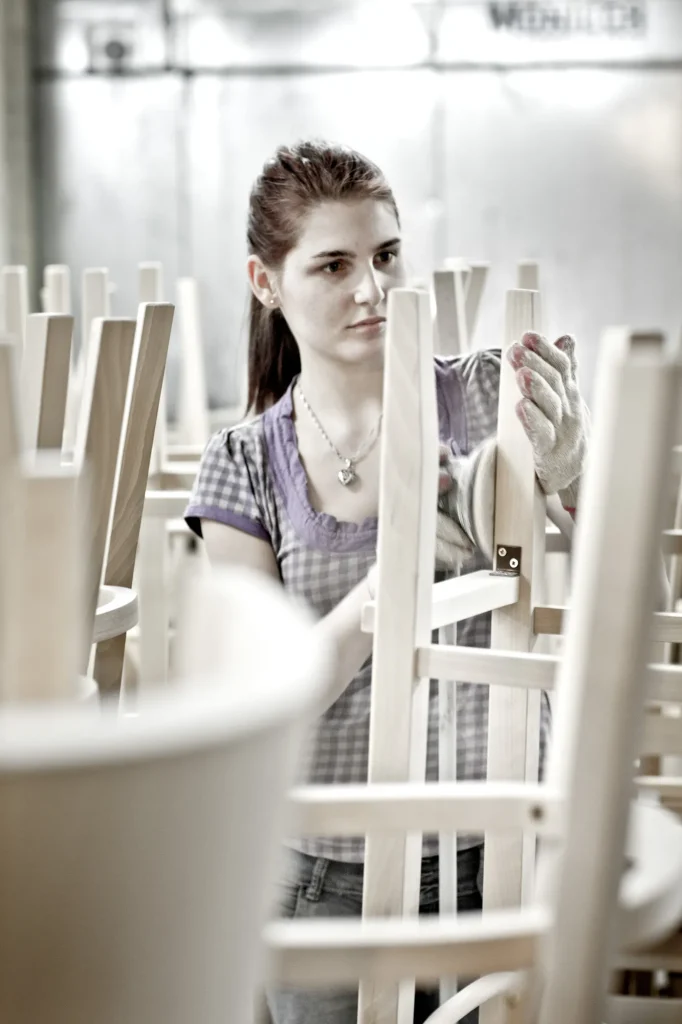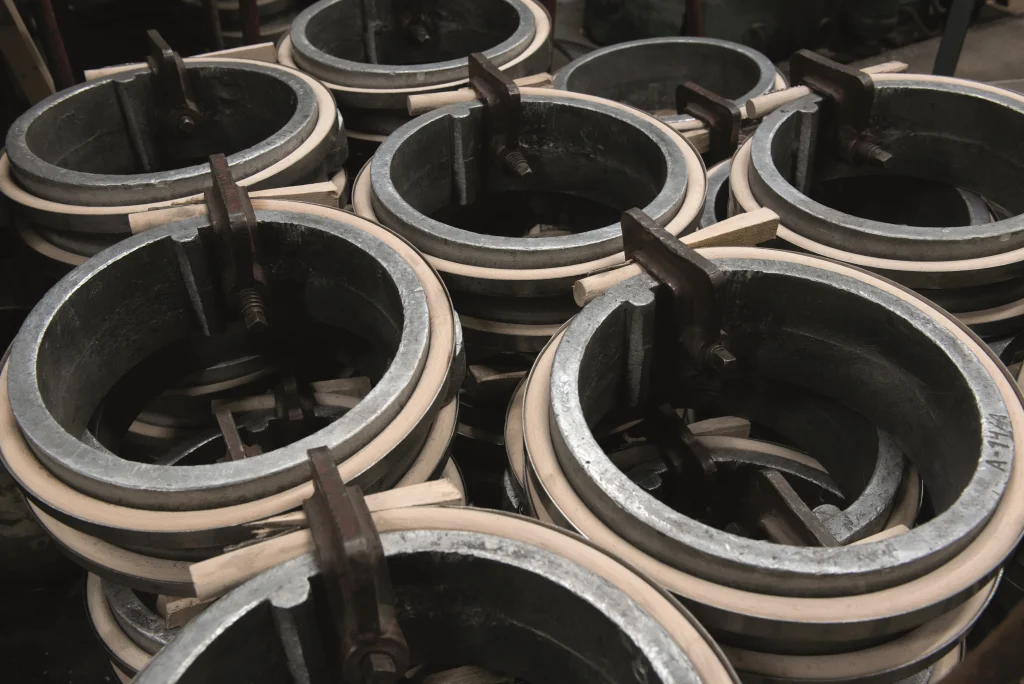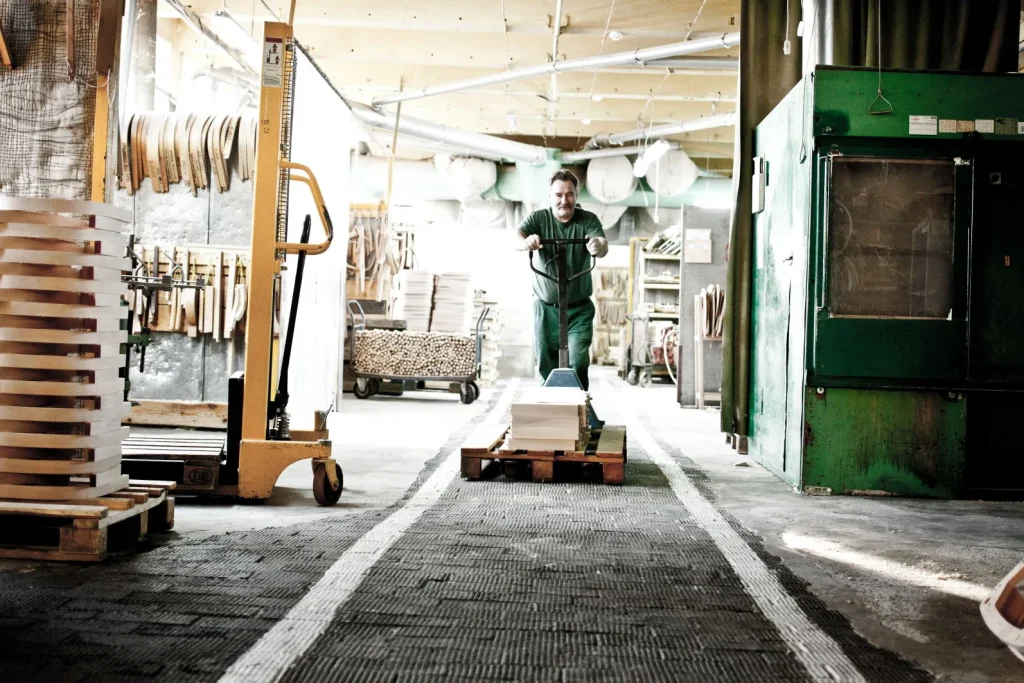Technological processes
Since 1881, when the Jasienica factory was founded, our brand has sought to enrich furniture with new quality attributes and further areas of application. Work has been carried out on, among other things, increasing durability, making transport easier, preparing for self-assembly, customisation and many other aspects. We are developing these concepts further, adding new strands and refinements. In addition to hand-bent chairs according to the designs of well-known designers, we develop new technologies in cooperation with the Paged LabTech research and development centre. We strive to bring new qualities and new uses to our furniture. We responsibly apply the principles of sustainability both in our production processes and in our efforts to make our furniture as durable as possible so that you can enjoy it for many years to come. Find out more about the technologies we use to make the world of furniture even more exciting.

Furniture making
Before describing the production process, we will take you to the modelling department – one of the key areas of our factory. This is where the designer’s vision for a chair or table comes to life in the hands of our experienced makers and engineers. It is also the place where furniture patterns, tooling and components for further production are created.
Our production process starts in the yard, where we receive deliveries of timber in various forms, such as squares, sawn timber, logs or cut timber. We stack the raw material and put it through a seasoning process. One of the key steps is drying the wood to achieve the correct moisture content according to the technology.

In the mechanical processing department, we use grinders, milling machines, copying machines and CNC machining tools to mill wood, drill, and cut components, frames and various shapes. Here, there are also presses for gluing components and a turning shop.
Another important area is the hydraulic press department, known as the planking shop, where we produce fittings, known as profile plywood. From these elements, we create planks, seat buckets, backrests, handrail profiles and simple plywood. We sand, emboss patterns and create “reliefs”.
The heart of our factory is the bending shop. In special steamers, we prepare the wooden components, which are then bent by our master craftsmen by hand and machine using rotary and wing benders. The next stage is seasoning to consolidate the given shape.
In the mechanical processing department, using analogue machines, we produce boards and inserts, mill, join and glue the components, which are then sanded using various types of sanding machines (vertical, table and peripheral). We keep these elements in stock.

Before the finished chair is created, sub-assemblies such as backrests and seats are put together in the assembly department. In the screwing shop, we assemble the chairs, adjust their height, specify the colour and then move them on to the paint shop, also known as the spray shop. There we cover them with stain, water-based varnish or enamel. We apply oil to chairs with movable metal connectors, such as the Axis.
In the upholstery shop, the chairs take on their softer side. Here, we create flat upholstery for seats and also upholster entire pieces of furniture, cutting out the fabric, sewing covers and covering seats and backrests with foam.
Before the furniture is packed and dispatched, it goes through a seasoning process that lasts between 12 and 24 hours. In the packing room, we add sliders, fix the upholstery and label the products.

An important area of the factory is also dedicated to furniture testing. Here, using the purchased testing machines, we check their durability. This is important for us, for you and for the environment. Our furniture is often used in hotels, restaurants, bars, cafés and public spaces where it is subjected to heavier use than at home. With Paged LabTech’s investment in its own equipment, we are confident that both the design and manufacture of the furniture will meet your expectations.












WRB technology
We are constantly seeking innovation in design and technology. An example of the successful collaboration with Paged LabTech is WRB (weather-resistant Beech) technology, which eliminates the traditional division between indoor and outdoor furniture.
WRB is a unique technology, developed by us, based on natural components. It effectively neutralises the effects of various weather conditions, allowing selected beechwood furniture models to be used outdoors, on the terrace, in the garden or in front of a catering establishment or hotel.

Thanks to the protective layer, furniture made of beechwood with WRB technology is resistant to discolouration, wood splitting, humidity, drying and mechanical damage. A standard chair, when exposed to the outdoors, usually loses quality when exposed to UV radiation, temperature changes or moisture from rain. In coastal areas, the action of salt present in the air can cause corrosion at the interface between metal components and wood. The WRB allows furniture to maintain its exceptional durability even in such climatic conditions.
A remarkable advantage of WRB technology is that it can be used on selected Beech furniture without upholstery. The application of the WRB does not affect the aesthetics of the furniture compared to a model without this protection.
The basic properties of chairs made with WRB technology have been proven in tests carried out in the ARALAB climate cabin of the Sherwin-Williams Laboratory in Märsta, Sweden, tests of the UV coating in accordance with ISO 11507:2007 and tests of salinity resistance in accordance with ISO 9227:2012.
WRB is a unique and exclusively available technology for our furniture, legally protected by patent number P-42368.

